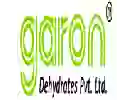
Chateau MarylandCôtes de Castillon
This wine generally goes well with poultry, beef or veal.
Food and wine pairings with Côtes de Castillon
Pairings that work perfectly with Côtes de Castillon
Original food and wine pairings with Côtes de Castillon
The Côtes de Castillon of Chateau Maryland matches generally quite well with dishes of beef, veal or game (deer, venison) such as recipes of pork shoulder with mustard, country-style veal roulades with risotto or festive chinese fondue.
Details and technical informations about Chateau Maryland's Côtes de Castillon.
Discover the grape variety: Fer
Fer or Fer Servadou, which means "easy to keep" in Occitan, or Mansois in Aveyron or Braucol in Gaillac, is a black grape variety grown in the southwest. It owes its name to its shoots and wood, which are "hard as iron", with medium-sized bunches and firm, juicy berries, and is characterized by its herbaceous taste (which is also found in Cabernet Franc). Iron is a grape variety resistant to frost and disease. Its buds come out late, but its growth accelerates and it matures quite quickly. For a good production, it prefers long pruning. Iron is used alone for the AOC Marcillac wines and in blends for the wines of the Gaillac, Madiran, Béarn and Fronton appellations. These wines have a deep colour, expressive tannins, they are round and fruity (blackcurrant, raspberry and green pepper...)
Informations about the Chateau Maryland
The Chateau Maryland is one of of the world's greatest estates. It offers 1 wines for sale in the of Castillon - Côtes de Bordeaux to come and discover on site or to buy online.
The wine region of Castillon - Côtes de Bordeaux
The wine region of Castillon - Côtes de Bordeaux is located in the region of Côtes de Bordeaux of Bordeaux of France. Wineries and vineyards like the Domaine de l'Aurage or the Château la Clariere Laithwaite produce mainly wines red, white and pink. The most planted grape varieties in the region of Castillon - Côtes de Bordeaux are Merlot, Cabernet franc and Cabernet-Sauvignon, they are then used in wines in blends or as a single variety. On the nose of Castillon - Côtes de Bordeaux often reveals types of flavors of cherry, savory or espresso and sometimes also flavors of baking spice, cigar box or tar.
The wine region of Bordeaux
Bordeaux, in southwestern France, is one of the most famous, prestigious and prolific wine regions in the world. The majority of Bordeaux wines (nearly 90% of the production Volume) are the Dry, medium and Full-bodied red Bordeaux blends for which it is famous. The finest (and most expensive) are the wines of the great châteaux of Haut-Médoc and the right bank appellations of Saint-Émilion and Pomerol. The former focuses (at the highest level) on Cabernet Sauvignon, the latter on Merlot.
The word of the wine: Shiraz
See syrah.






